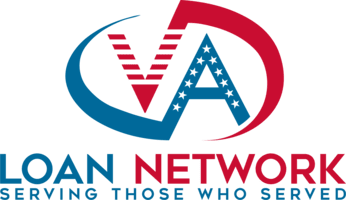In this Article
What Does Refinancing a VA Loan into an FHA Mortgage Mean?
Short Answer: You replace your existing VA-backed loan with a new home loan insured by the Federal Housing Administration (FHA).
When you refinance a VA loan into an FHA loan, you close out your VA mortgage and open an FHA mortgage. This switch might help if you have a lower credit score, want a fixed rate, or need a cash-out refinance with more flexible rules.
Since it’s not a VA-to-VA refinance, you’ll follow FHA guidelines regarding credit score, interest rates, mortgage insurance premiums (MIP), and equity requirements.
2. Why Refinance VA Loan into FHA Loan?
Short Answer: Veterans often do a VA to FHA refinance for easier credit approval, better cash-out terms, or a fixed interest rate—even if it means taking on mortgage insurance.
Key Reasons to Refinance from VA Loan to FHA Loan:
- More Lenient Credit Requirements: FHA loans often accept scores as low as 580, whereas many VA lenders prefer 620 or higher.
- Cash-Out Flexibility: FHA allows you to tap up to 80% of your home’s value in a cash-out refinance, even if you lack enough remaining VA entitlement.
- Predictable Fixed Rates: If your current VA loan has an adjustable rate, switching to an FHA fixed-rate mortgage can stabilize your monthly payments.
- Avoid VA Funding Fees: VA loans charge a funding fee that can climb above 3%, while FHA loans use an upfront mortgage insurance premium instead.
Real-World Example: A veteran with a 590 credit score struggled to refinance under VA guidelines. By switching to an FHA loan, they qualified for a lower interest rate and unlocked $30,000 in equity to renovate their kitchen.
3. VA Loan vs. FHA Mortgage: Key Differences
Short Answer: VA loans require no down payment or PMI but have a funding fee. FHA mortgages require a 3.5% down payment (minimum) and monthly MIP, but they’re open to everyone.
| Feature | VA Loan | FHA Loan |
|---|---|---|
| Down Payment | None required (0% down) | 3.5% minimum (580+ credit score) |
| Credit Score | Often 620+ (lender criteria) | 580+ (3.5% down), 500–579 (10% down) |
| Insurance | No monthly PMI; one-time fee | Mortgage Insurance Premium (Upfront & Monthly) |
| Eligibility | Veterans/military service only | Open to all, including veterans |
| Loan Limits | No official cap with full entitlement | $524,225 (varies by county) |
4. Expanded Eligibility for Refinancing into an FHA Loan
Short Answer: FHA refinance requirements focus on credit score, debt-to-income (DTI) ratio, and home equity. If you don’t meet these standards, there are steps you can take to improve your qualifications.
Credit Score Requirements
- 580 or Higher: Qualifies for a 3.5% down payment or equivalent home equity.
- 500–579 Range: You may still be eligible with a 10% down payment or sufficient equity in your home.
If your credit score is below 500, work on building it up by:
- Paying off outstanding debts.
- Ensuring on-time payments for at least six consecutive months.
- Checking for errors on your credit report and disputing inaccuracies.
Debt-to-Income (DTI) Ratio
- 43% or Lower: Generally preferred by lenders, indicating healthy financial balance.
- Up to 50%: Possible if you have a stronger credit history or substantial cash reserves.
To lower your DTI:
- Pay down high-interest credit cards.
- Consolidate debts into a lower-interest loan.
- Avoid new credit applications until after you refinance.
Equity Requirements
- 3.5% Equity Minimum: For a rate-and-term refinance if your credit score is 580+.
- 10% Equity: If your credit score falls below 580.
- 20% Equity (Ideal for Cash-Out): FHA allows up to 80% loan-to-value, so you need about 20% equity to execute a cash-out refinance.
If You Don’t Qualify Immediately:
- Improve your credit score by making consistent, on-time payments.
- Reduce your DTI by paying off or consolidating debts.
- Wait until home values rise, increasing your equity.
- Seek a co-borrower if possible (e.g., spouse) with a better credit score to strengthen your loan application.
By taking these steps, you can position yourself to refinance your VA loan into an FHA loan successfully once you meet the necessary criteria.
5. Step-by-Step Process to Refinance (With How-To Schema)
Below is a clear roadmap to refinancing from a VA loan to an FHA loan. Follow each step carefully to streamline the process and get closer to your financial goals.
Process at a Glance
- Define Your Goal – Are you looking for a lower monthly payment, a fixed rate, or a cash-out refinance?
- Check FHA Eligibility – Review credit score, DTI ratio, and your available equity.
- Shop Lenders – Get multiple quotes, compare interest rates and closing costs.
- Gather Documentation – Prepare income and asset statements, plus your VA mortgage details.
- Apply & Lock Rates – Submit your application and lock in an interest rate once approved.
- FHA Appraisal – Pay for an appraisal to confirm your home’s value.
- Close the Deal – Review final terms, pay closing costs, and sign on the dotted line.
Action Step: Ready to start? Contact our recommended FHA lenders to request a personalized rate quote and see if you qualify today.
6. Costs and Fees to Expect
Short Answer: Prepare for upfront and ongoing mortgage insurance premiums, closing costs, and appraisal fees when you refinance a VA loan into FHA loan.
- Upfront MIP: 1.75% of the loan amount (e.g., $3,500 on a $200,000 refinance).
- Annual MIP: Typically 0.45%–0.85% of the loan balance, divided monthly.
- Closing Costs: 2%–5% of the loan (e.g., $4,000–$10,000 on a $200,000 loan).
- Appraisal Fee: $400–$600, depending on your location.
Tip: Some or all of these costs can be rolled into your new FHA loan, but doing so increases your principal and interest over time.
7. Pros and Cons of Switching to FHA
Short Answer: A VA to FHA refinance can offer easier qualifications and cash-out options, but expect monthly MIP payments and loan limits.
Pros
- More Lenient Credit Approval: Great if your score is below VA’s typical 620 threshold.
- Cash-Out Refinance: Up to 80% LTV, helpful if you need funds for home repairs or emergencies.
- Fixed Interest Rates: Ideal if your VA loan has an adjustable rate that’s starting to climb.
Cons
- Mortgage Insurance Premiums: FHA includes both upfront and monthly MIP.
- FHA Loan Limits: Generally capped at $524,225 in most areas for 2025 (though limits vary by county).
- Lost VA Perks: You won’t lose future VA eligibility, but your entitlement may remain tied up in the property until you restore it.
8. FAQs About VA to FHA Refinance
Can you refinance a VA loan into an FHA loan?
Yes. It’s a common choice for veterans who don’t meet VA refinance requirements or want specific cash-out options.Why refinance from VA to FHA?
Lower credit score thresholds, potential access to equity, and a stable fixed interest rate can make FHA more flexible for some veterans.Are there extra costs to refinance VA loan into FHA loan?
You’ll pay an upfront MIP (1.75%), annual MIP, and standard closing costs, plus an appraisal fee.How does the timeline compare to a VA IRRRL?
Refinancing to an FHA loan can take about 30–45 days, similar to a standard refinance. A VA IRRRL might be faster but has stricter eligibility rules.What if I have a lower credit score?
FHA guidelines allow credit scores as low as 500 with a 10% down payment or equivalent equity, making it a viable fallback if your VA refinance is denied.Do I lose my VA entitlement?
Your VA entitlement remains tied to the original loan until you sell the property or otherwise restore your entitlement, but you do not lose future VA eligibility.
Comparison Table: Refinancing Options
| Option | VA IRRRL | VA Cash-Out | FHA Refinance |
|---|---|---|---|
| Purpose | Lower rate/term | Access equity | Rate/term or cash |
| Credit Minimum | ~620+ | ~620+ | 580+ (3.5%); 500–579 (10%) |
| Fees | 0.5% funding fee | 2.15%–3.3% funding fee | 1.75% upfront MIP + monthly MIP |
| Equity Needed | None (streamline) | Can go up to 100% LTV | ~20% for cash-out; 3.5%–10% for rate/term |
| Loan Limits | No official cap w/ entitlement | No official cap w/ entitlement | $524,225 (2025 standard, varies by area) |
Summary and Key Takeaways
Refinancing your VA loan into an FHA mortgage can be a smart financial move if you:
- Need More Flexible Credit Requirements: FHA loans often approve lower scores and allow higher DTI ratios.
- Want to Tap Equity: FHA’s cash-out refinance can help you fund home improvements or consolidate debt.
- Prefer Fixed Payments: A stable monthly payment can provide peace of mind if you currently have an ARM (Adjustable-Rate Mortgage).
Remember, you will pay mortgage insurance premiums each month for FHA loans, and loan limits can be a factor if you have a higher home value. Always compare multiple lenders, weigh the added costs, and ensure your personal finances align with this approach.
Next Steps & Resources
- Action Step: Contact Our Recommended Lenders to see if you qualify for an FHA refinance today.
- Need More Info on VA Entitlement? Check out our Complete Guide to VA Loan Entitlement for restoring or maximizing your VA benefits.
- Official VA Resources: Visit the VA.gov website for the latest on VA loan eligibility, benefits, and additional guidance.
Ready to Refinance?
Take the next step toward your VA to FHA refinance goal.
Gather your documents, compare interest rates, and talk to a trusted lender about how to refinance your VA loan into an FHA loan today.
With the right strategy, you can secure a lower monthly payment, pull out extra cash, or simply gain peace of mind with a fixed-rate mortgage.


